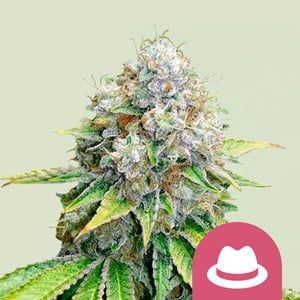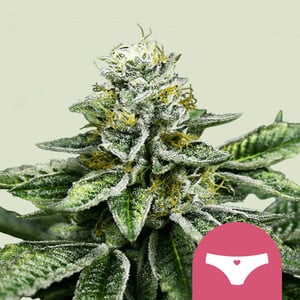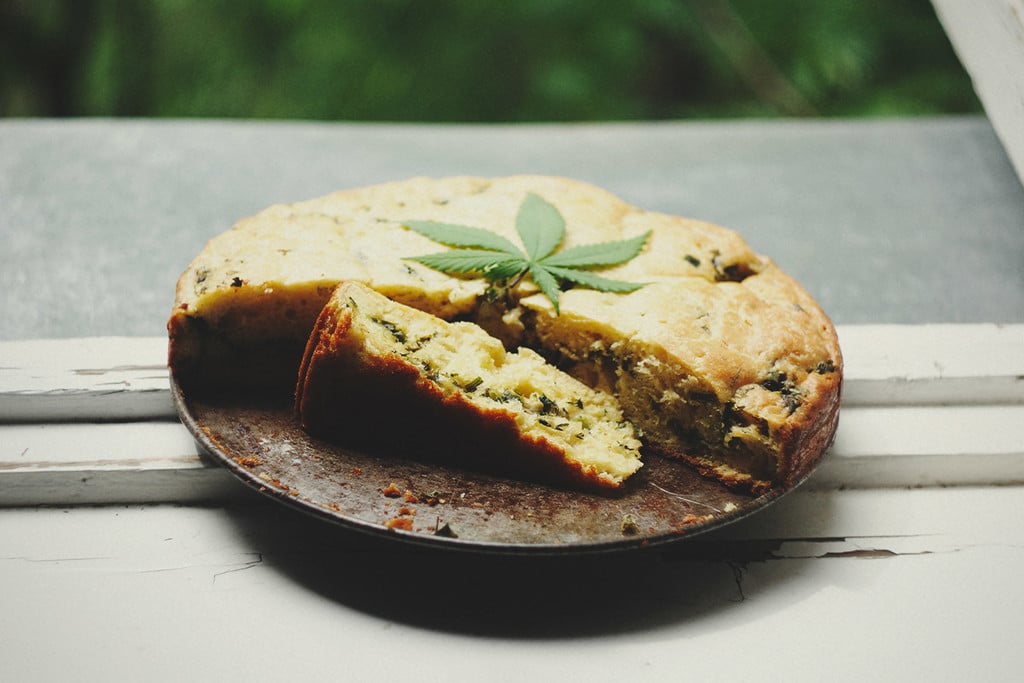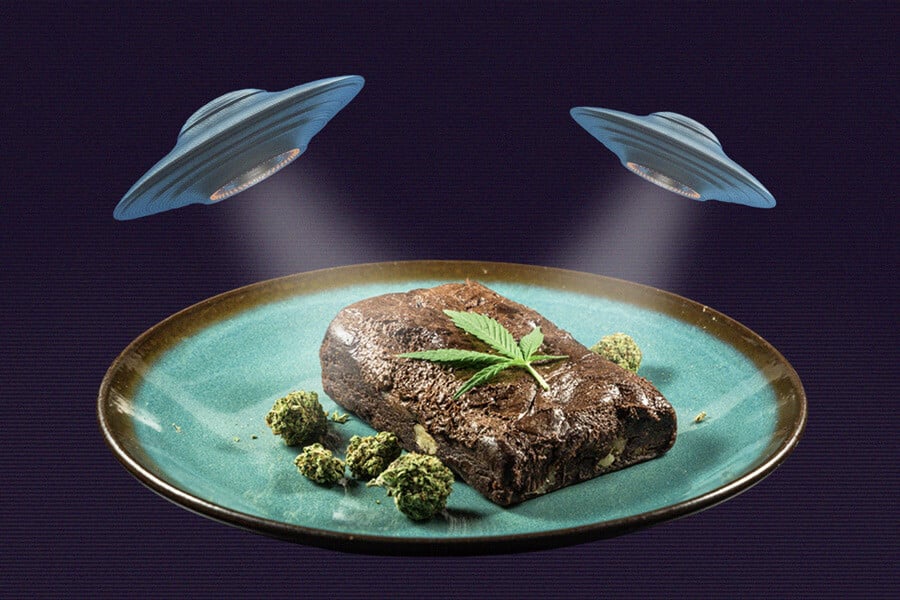.

How to Make Highly Potent Cannabutter
You only need a few basic ingredients like salted butter, tap water, and of course, a good amount of trimmings, buds, or a mix of both. Learn how to make your own cannabutter!
Contents:
- Stage 1: find a place to cook, buy ingredients, chop up raw material
- Stage 2: melt your butter
- Stage 3: add your raw material and let it simmer
- Stage 4: filter the mix, fill it into containers, cool down
- How to dose cannabutter
- Here are the top 5 strains to use when crafting your own batch of cannabutter
When harvest day is on the rise, a sense of excitement lies in the air. We invest a lot of time, money, and love, to guarantee ideal conditions for our precious plants. Let’s be honest, as soon as trichomes begin to change in color, most of us get nervous and can’t wait to manicure, dry and cure.
First step after harvesting is trimming. This can be a delightful thing to do. After countless hours of being highly concentrated on trimming like an artist, following question might arises:
What to do with the large amounts of trim and lower grade buds?


It’s only logical for us to use all the THC and other cannabinoids, provided by our plants. One way of using our trim is producing delicious and potent cannabutter. This blog will walk you through the step-by-step process of making butter, using the “long simmering method”. If you are really interested in producing a butter that is strong, delicious and perfectly natural, then look no further and try this recipe. Let’s cook!
Ingredients and Equipment
| 28g of cured trimmings | Preferably the small, sugary bud leaves |
| 14g of cannabis blossoms | Choose the quality you like |
| 250g of salted butter | Salted butter = higher melting point |
| 300ml of tap water | Plus approximately 50ml for every hour of simmering) |
| 1x cooking pot | Pan works fine |
| 1x sharp knife | For fast results use kitchen blender |
| 1x stove | Camping cooker can be a mobile option |
| 1x cheese cloth | A fine kitchen sieve , or any kind of finer mesh material does the job |
| Storage containers | Glasses look very nice, plastic can also be used |
| Anything from 8-24 hours of your time | Due to the long-simmering at low heat |
| 28g of cured trimmings | Preferably the small, sugary bud leaves |
| 14g of cannabis blossoms | Choose the quality you like |
| 250g of salted butter | Salted butter = higher melting point |
| 300ml of tap water | Plus approximately 50ml for every hour of simmering |
| 1x cooking pot | Pan works fine |
| 1x sharp knife | For fast results use kitchen blender |
| 1x stove | Camping cooker can be a mobile option |
| 1x cheese cloth | A fine kitchen sieve , or any kind of finer mesh material does the job |
| Storage containers | Glasses look very nice, plastic can also be used |
| Anything from 8-24 hours of your time | Due to the long-simmering at low heat |
⚠️ Disclaimer: you experiment at your own risk
This recipe is meant to produce very potent butter. It uses 28g grams of sugary bud leaves, together with 14 grams of buds. The trimmings and buds are a blend of two different strains, one being indica-dominant, with strong Afghani influences, and Cheese. The raw material has been cured in jars for 14 days.
If this is your first time making cannabutter, you might want to use substantially less raw material and experiment with lower amounts of trim and bud.
Producing cannabutter always involves the risk of doing an excellent job, and ending up with a product that is very potent. Be responsible and slowly work your way up until you reached the desired effect. Sometimes it takes up to 3 hours until you feel anything. Wait a long time-span before eating more. There is the potential risk of throwing up and having a bad trip full of self-doubt, anxiety and paranoia. Try to relax when you ate too much, you feel better the next morning.
Do not operate any heavy machinery, including cars when being under the influence of cannabutter. The effect can last up to 8 hours and has a strong influence on your skills, necessary to operate any kind of machinery. You might end up having problems operating a microwave.
Calculator results |

The amount of cannabis flowers
to prepare the cannabutter.

The THC concentration of the cannabis flowers.

The CBD concentration of the cannabis flowers.

The starting amount of butter to prepare the cannabutter.

The amount of cannabutter we want to use to cook the recipe.

The number of portions of the final recipe.

The number of portions consumed per person.

The total amount of THC present in the cannabis flowers

The total amount of CBD present in the cannabis flowers

The initial quantity of butter is reduced by evaporation (75 %)

The total amount of THC present in the cannabutter.

The total amount of CBD present in the cannabutter.

The amount of THC present in the cannabutter used in the recipe.

The amount of CBD present in the cannabutter used in the recipe.

The amount of THC present in each portion.

The amount of CBD present in each portion.

The amount of THC ingested according to the number of portions consumed.

The amount of CBD ingested according to the number of portions consumed.
| Infusion for cannabutter |

The amount of cannabis flowers to prepare the cannabutter.

The THC concentration of the cannabis flowers.

The CBD concentration of the cannabis flowers.

The starting amount of butter to prepare the cannabutter.

The amount of cannabutter we want to use to cook the recipe.

The number of portions of the final recipe.

The number of portions consumed per person.

The total amount of THC present in the cannabis flowers

The total amount of CBD present in the cannabis flowers
cannabutter (g):

The initial quantity of butter is reduced by evaporation (75 %)
(mg) in the cannabutter:

The total amount of THC present in the cannabutter.
(mg) in the cannabutter:

The total amount of CBD present in the cannabutter.
used in the cannabutter:

The amount of THC present in the cannabutter used in the recipe.
used in the cannabutter:

The amount of CBD present in the cannabutter used in the recipe.
per portion:

The amount of THC present in each portion.
(mg) per portion:

The amount of CBD present in each portion.
THC (mg) consumed:

The amount of THC ingested according to the number of portions consumed.
(mg) consumed:

The amount of CBD ingested according to the number of portions consumed.
Stage 1: Find A Place To Cook, Buy Ingredients, Chop Up Raw Material
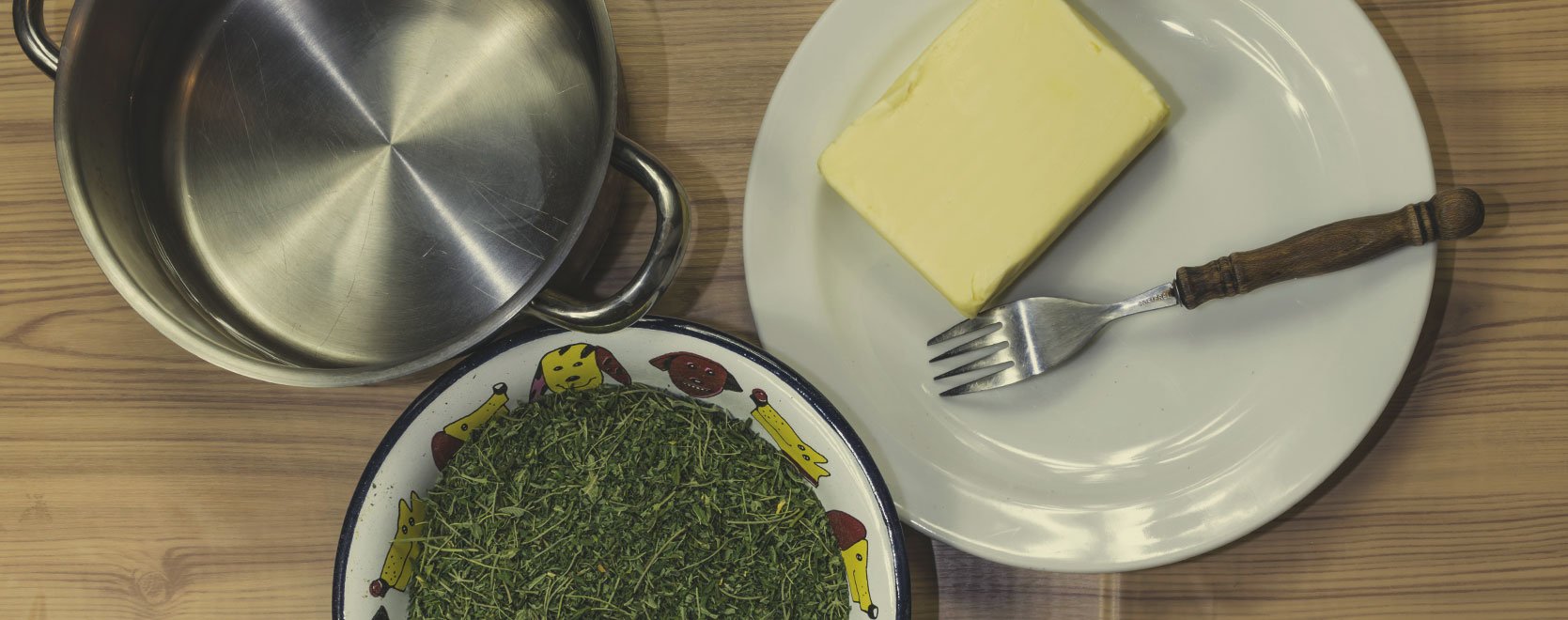
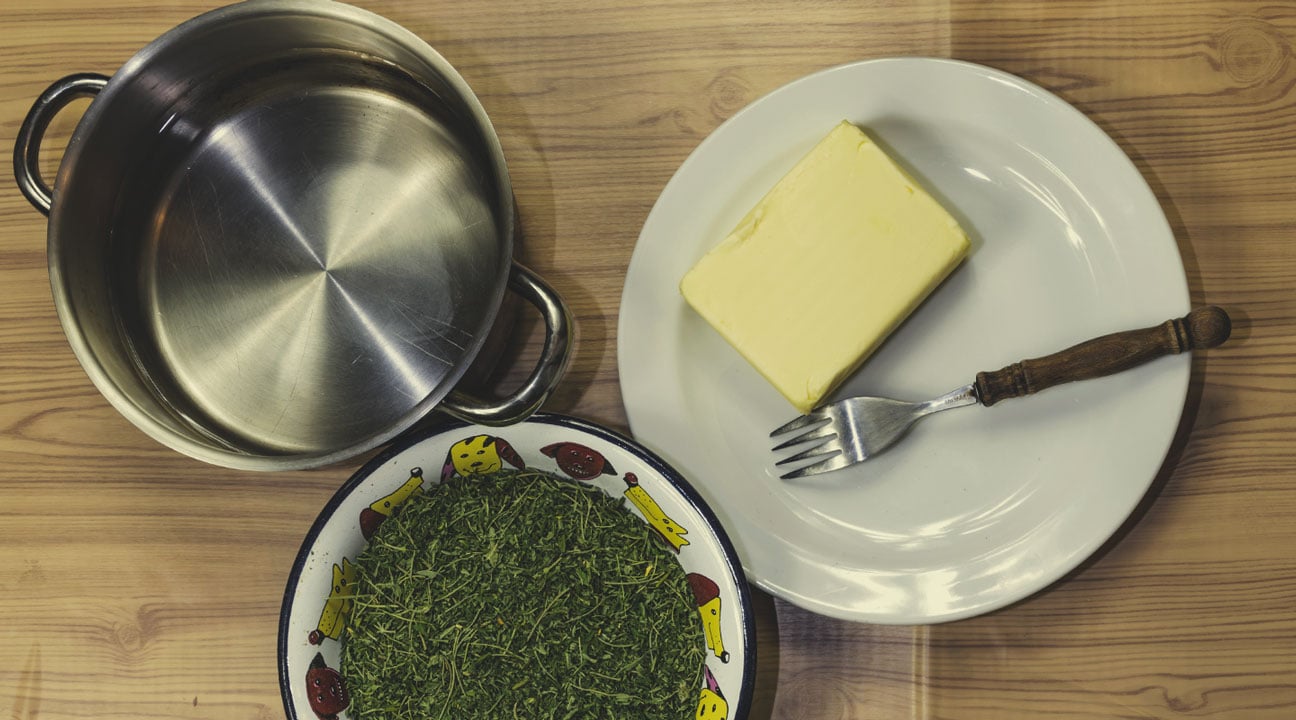
Think of the delicious but risky smell when choosing a location to produce your butter. Depending on the quantities you want to produce, smell can be a small issue. It's always present when making cannabutter but can be reduced by a good airflow in your kitchen. Another option is making a rather smelly type of food while making butter at the same time. This can help to camouflage up the smell.
Chop up your trimmings and lower grade buds.
You can use a kitchen blender if you’re not willing to use a sharp kitchen knife. What you aim for is a nice blend of trimmings, combined with buds of the quality you prefer. It makes sense to use the airy and fluffy ones from lower branches. If you aim for higher or lower potency, you can increase or decrease the amount of buds. You can get very good results by just using trimmings to be honest.
Stage 2: Melt Your Butter


Before we dive into baking, we’ll need to decarboxylate our cannabis. This converts non-bioavailable cannabinoids like THCA and CBDA into THC and CBD, which are then bioavailable. This means that when eaten, they readily work their wondrous effects.
Preheat an oven to somewhere between 104°C and 113°C. As the oven heats, grind your weed and place it in an oven safe container, made out of glass or ceramic. When the oven is ready, bake your weed for 30–40 minutes. Set a timer so you don’t forget about it!
Once it’s done, remove your weed from the oven and place it on the counter to cool off.
Stage 3: Add Your Raw Material And Let It Simmer


This recipe was tested by letting the mix simmer for 8 hours. If you are aiming for extreme potency, you can let your butter simmer for up to 24 hours. When you have enough time for that, do it!
After creating your blend of butter and water, you can go ahead and mix in your trim.
What follows is a simmering of your mixture at very low temperatures. By not putting a lid on the pot, we allow the water vapour to leave our mixture. Heat can escape our pot/pan, too. The 300ml of water, we added at the beginning, will turn into water vapour over time but the butter will stay in our mixture. This is very important because we still need the butter at the end. The butter is our carrier material for cannbinoids and THC, and therefore must be protected from too much heat and evaporation.
When checking for the right temperature. You need to closely monitor the surface of your mixture. Do you see tiny bubbles forming at the surface? They are an indicator for being within the right temperature range. These small bubbles are only a few millimeter in size and differ from the bubbles, caused from cooking at high temperatures.
Here is a picture of the small bubbles you are aiming for.

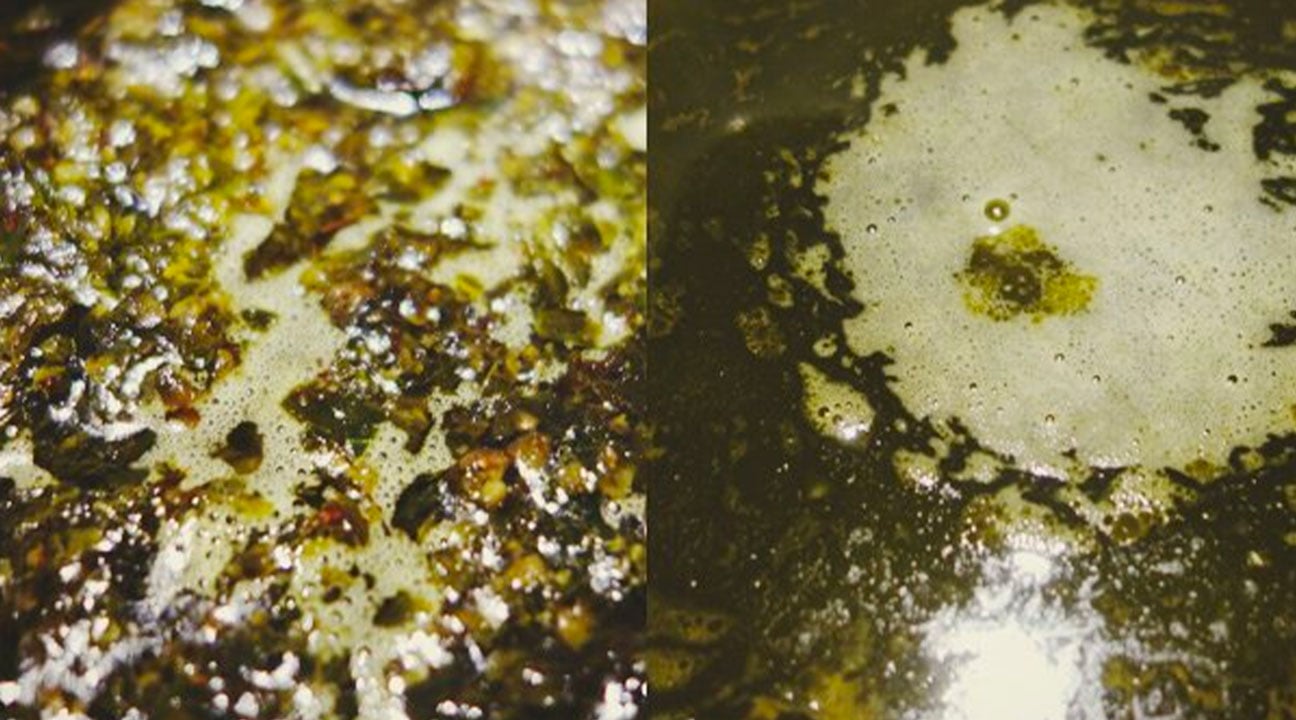
You also need to check if the amount of water is sufficient to submerge all the raw material. This is important to get the highest amount of THC and cannabinoids possible. It’s natural to add between 50-100ml of water every hour due to evaporation.
After 8 hours of low simmering most of your work is done. You still need to filter the mixture to separate any raw material from your butter. Your mixture should be dark in color by now, similar to the one in this picture.
Stage 4: Filter The Mix, Fill It Into Containers, Cool Down

If you want to give your premium product a high-class packaging, you can use all kinds of different glasses. Big Swedish furniture stores often have a nice selection of curing jars and smaller glass containers that can be used.
Filter your mixture through a cheese cloth, or any other kind of material that separates the raw material from the butter. Fill the liquid into the desired container and place it into your fridge. After a few hours of cooling down, you can simply take the butter from the surface, leaving a brown liquid behind.
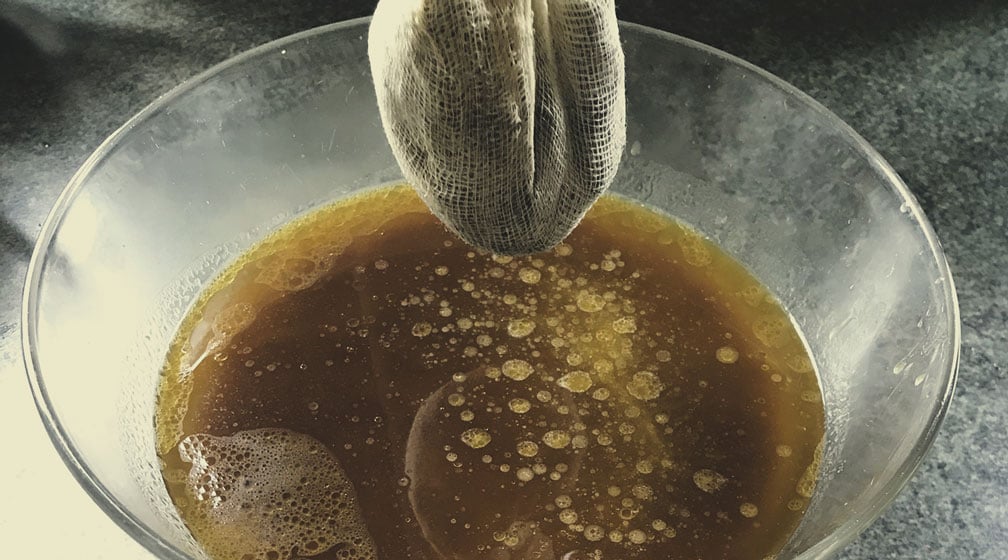
Your final product is most likely to look anything like this. You can see that the color of the mixture is dark brownish while being in its liquid form. After separating the brown water from the butter, you will see what you skillfully created, a pile full of highly potent green deliciousness. Have fun experimenting with this recipe and remember to be careful. Don’t be the guy who ate too much!

How To Dose Cannabutter
Edibles can be very strong, and you’re committed for quite a long time once you're high. Therefore, it’s important to have a rough idea of how potent your edibles are going to be.
The calculation begins with the THC content of the cannabis product you're using to make the weed butter. If you’ve grown your own, you’ll likely know the maximum strength of your weed.
If it’s from a trusted seller and they know which strain it is, look it up and go with the maximum strength. If you have no idea, aim high and assume it’s 25% THC, just to be on the safe side.
It is also worth noting that we use both trim and bud in our recipe. However, determining the THC content of trim is very difficult. If you want to be precise, you may want to consider only using cannabis flowers. Or, you can simply use the math as a rough guide, and add all the trim you want!
Note, the math here assumes that your butter will absorb 100% of the THC in your weed, which it won't. But it will get most of it, so take this as a rough guide.
-
The Math
For the purposes of this explanation, we’ll say the weed has a THC content of 20%. This means that 20% of the weed's weight is THC. So, per gram (1000mg), we have 200mg of THC. If you have 3 grams, you would have a total of 600mg of THC.
To calculate this for yourself, take the weight of your cannabis in mg, divide it by 100, then multiply it by the percentage of THC.
|
So, in the case of 1000mg (1g) of weed: 1000/100 = 10 We have 200mg of THC. |
|
So, in the case of 1000mg (1g) of weed: 1000/100 = 10 We have 200mg of THC. |
|
In the case of 3g (3000mg) of cannabis: 3000/100 = 30 We have 600mg of THC. |
|
In the case of 3g (3000mg) of cannabis: 3000/100 = 30 We have 600mg of THC. |
|
Let's change it up. Let's say your cannabis contains 17% THC and you have 2g (2000mg): 2000/100 = 20 So 2g of 17% THC cannabis has 340mg of THC in it. |
|
Let's change it up. Let's say your cannabis contains 17% THC and you have 2g (2000mg): 2000/100 = 20 So 2g of 17% THC cannabis has 340mg of THC in it. |
-
Calculating the Strength of Your Cannabutter
The strength of an average cannabis edible is 10–15mg of THC for normal users, and 15–30mg of THC for seasoned users. Any more than this is usually for those with an extremely high THC tolerance (our recipe is very strong!).
With this in mind, the above formula works out how much THC is in your butter, allowing you to determine how many portions of butter you have. Or, going one level deeper, how many portions of edibles you have for the amount of butter used.
So, if you used 1g of 20% THC weed in our recipe, you would end up with 250g of butter with 200mg of THC in it. If you wanted to achieve an average strength of 10mg per portion, this would call for 20 portions, as you simply divide the total milligram content by the milligram content of one portion:
|
200/10 = 20 portions |
|
200/10 = 20 portions |
But you are unlikely to eat the butter as is, so let's take a look at edible dosing.
-
Calculating the Strength of Your Cannabutter Edibles
Cannabis-infused brownies are a common edible made using cannabutter, so we will use it as an example.
Let's say you've made 250g of cannabutter with 200mg of THC in it. The brownie recipe wants you to use 100g of cannabutter. This means your brownie mix will have 80mg of THC in it—your 250g has 200mg of THC, so the 100g used in the recipe has ⅖ of this.
If you want 10mg portions, it means you need to divide your brownies into 8 portions. If you wanted 15mg portions, you would divide your brownies up into 5 portions.
- What To Do if Your Cannabutter Is Too Strong?
You may have noticed we didn't use 1g of 20% weed here at RQS. We used 14g plus trim! For the sake of this example, we will say we used 14g of 22% weed to make 250g of cannabutter:
|
14,000/100 = 140 140 × 22 = 3,080 This means we have 3,080mg of THC in our 250g of butter! |
|
14,000/100 = 140 |
If we're making brownies with 100g of butter and aiming for 10mg per portion, we would have 123 portions! A bit too many for such a small recipe!
Say we're only looking to make 10 portions for the people at the office. The simple fix is to work out how strong 1g of cannabutter is, use enough for 10 portions, and make up the rest of the 100g required with normal butter.
To work out 1g, take the THC content in milligrams and divide it by the weight of the butter in grams:
|
3,080/250 = 12.32 This means we have 12.32mg of THC in 1g of butter. |
|
3,080/250 = 12.32 |
If our brownie recipe requires 100g of butter, and we want 10 portions, we could use 10g of our cannabutter and make up the remaining 90g with normal butter! each portion would then have roughly 12mg of THC—a moderate dose.
Here Are The Top 5 Strains To Use When Crafting Your Own Batch Of Cannabutter
WHITE WIDOW
White Widow is a celebrity of the cannabis world, and it has truly earned its distinction. This award-winning strain is thought to have originated as a sativa landrace from Brazil, which was then pollinated by an indica hybrid from South India. Regardless of its true origins, the first ever account of White Widow cultivated by man occurred in the Netherlands. White Widow is a superb strain to select when making cannabutter. A THC level of 19% and a fine balance between 50% indica genetics and 50% sativa mean that the high will be well-rounded, targeting the body and mind simultaneously. The head high is productive and motivating, whilst the body high is stoning and calming. White Widow is also renowned for her delicious notes of earth and pine, which will add serious flavor to your cannabutter.
White Widow provides good yields both indoors and outdoors, offering enough plant material for big batches of cannabutter. Indoor plants churn out 450–500g/m² and grow to heights of 100cm. Outdoor plants offer yields of 550–600g/plant and grow to heights of 190cm. White Widow has a flowering time of 8–9 weeks.


White Widow
|
|
White Widow S1 |
|
|
16 to 19 oz/m² |
|
|
2 to 3 feet |
|
|
8 - 10 weeks |
|
|
THC: 19% |
|
|
Sativa 50% Indica 50% |
|
|
19 to 21 oz/plant |
|
|
5 to 6 feet |
|
|
Early October |
|
|
Powerful , Stoned |
BUBBLE KUSH
Bubble Kush is Royal Queen Seeds’ very own superstar Bubba Kush variant, and is the result of mixing OG Kush with the delicious and famous Bubble Gum. Bubble Kush is loaded with a variety of terpenes that produce intense flavors of earth, pine, and sweetness. This beauty is ideal for making cannabutter to add to sweet recipes such as brownies, cakes, and other desserts. The high induced by these edibles will be indica-dominant, inspiring euphoric feelings of mental and physical relaxation, along with munchies that will keep you close to the kitchen. A THC content of 19% ensures hard-hitting and long-lasting highs.
Bubble Kush produces good yields both indoors and out, making her ideal for those who want to make large quantities of cannabutter at one time. Indoor plants produce up to 600g/m² and grow to 140cm in height. Plants grown outdoors provide up to 650g/plant and reach tall heights of 200cm. Bubble Kush has a flowering period of 7–8 weeks.
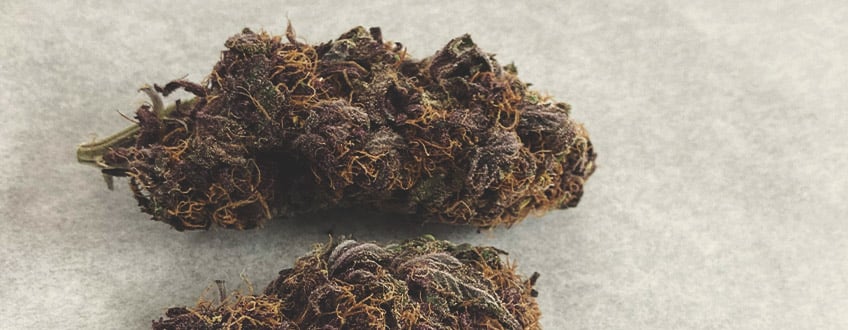
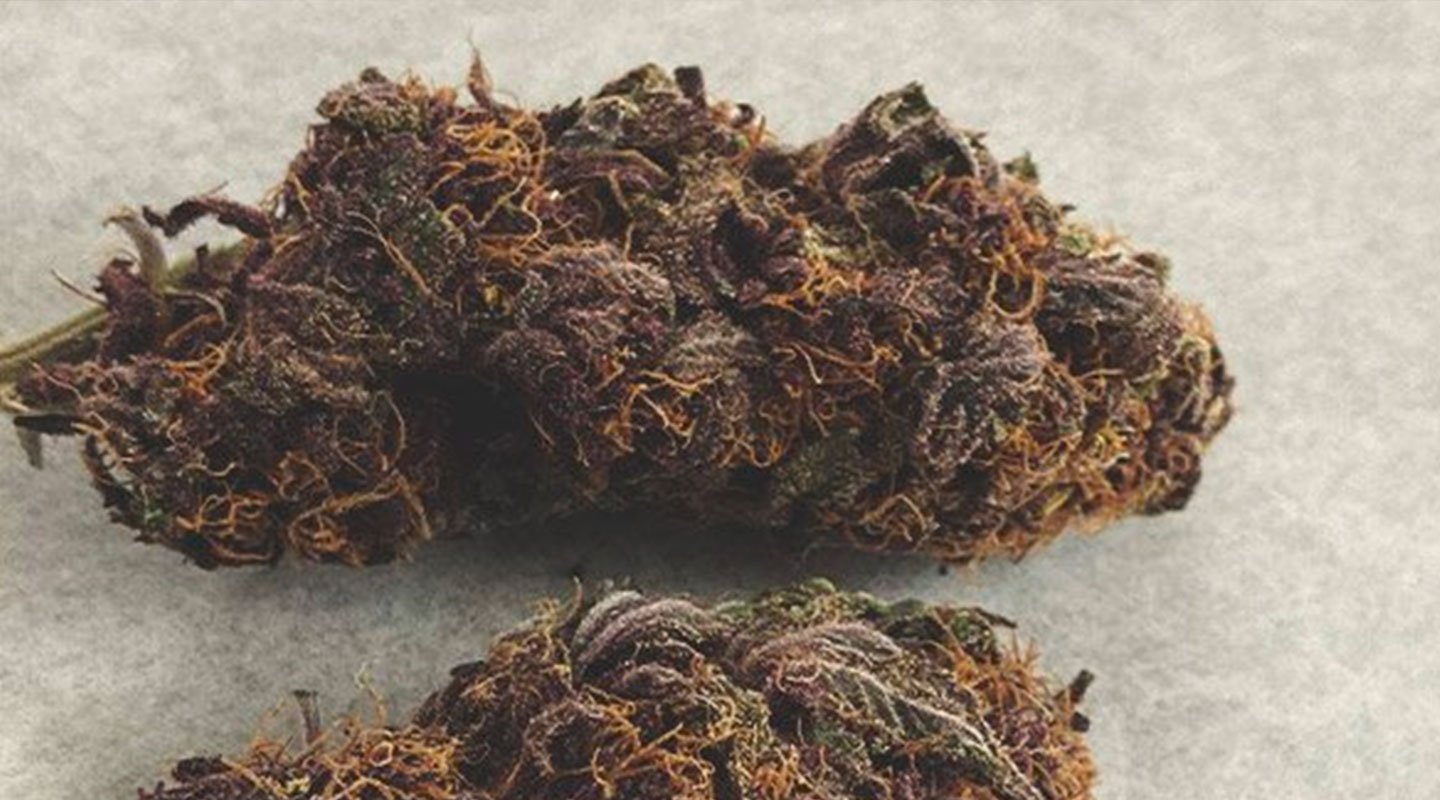
Bubble Kush
|
|
Bubble Gum x O.G. Kush |
|
|
19 to 21 oz/m² |
|
|
3 to 5 feet |
|
|
8 - 10 weeks |
|
|
THC: 19% |
|
|
Sativa 20% Indica 80% |
|
|
21 to 23 oz/plant |
|
|
5 to 7 feet |
|
|
Late September |
|
|
Clear, Physically Relaxing, Stoned |
OG KUSH
OG Kush is undoubtedly one of the most well-known and appreciated cannabis strains, making appearances in blockbuster films and music productions. Her renown is well-deserved, as OG Kush is a true genetic masterpiece stemming from enigmatic parent strains Chemdawg, Lemon Thai, and Pakistani Kush. Loaded with flavors of citrus, pine, and fruit, OG Kush is a great fit for any recipe requiring cannabutter, offering boat-loads of flavor. The indica-dominant nature of this strain culminates in a relaxing high that will melt users through their couch and onto the floor. Eating an OG Kush edible in the evening will result in meditative and blissful states of mind.
OG Kush produces yields of up to 475g/m² and grows to heights of 160cm indoors. Preferring a mild climate outdoors, she’ll pump out harvests of 550g/plant and skyrocket to heights of 220cm. She has a short flowering time of between 7–9 weeks.

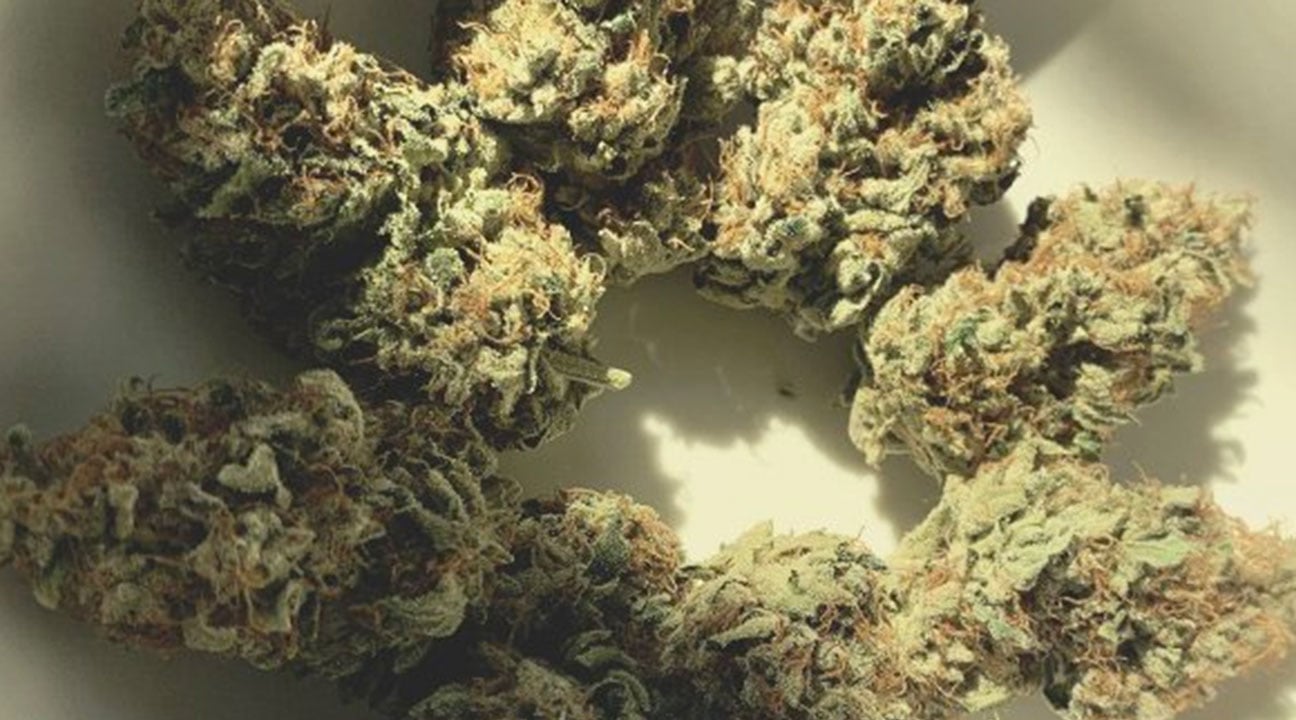
OG Kush
|
|
Chemdawg x Lemon Thai x Pakistani Kush |
|
|
15 to 17 oz/m² |
|
|
3 to 5 feet |
|
|
7 - 9 weeks |
|
|
THC: 19% |
|
|
Sativa 25% Indica 75% |
|
|
18 to 19 oz/plant |
|
|
6 to 7 feet |
|
|
October |
|
|
Calming, Uplifting |
SHERBET QUEEN
Sherbet Queen gets her enticing title from her undeniably delicious flowers. The terpene profile within these buds combines perfectly to create profound flavors of forest fruits that truly light up the taste buds. Her indica dominance ensures relaxing and therapeutic highs designed for the nighttime hours. Her rich tastes belong in rich recipes where cannabutter can enhance both the flavors and effects of the edible. Her strong THC content means this strain is best reserved for the experienced, as her potent high is only further augmented in edible form.
Sherbet Queen is a pleasure to grow, and is a hardy strain that requires little fuss from the grower. A high resistance to fungal infections makes her resilient to setbacks, and she thrives most in a warm climate outdoors. Sherbet Queen will be ready to harvest during the end of September or the beginning of October.


Sherbet Queen
|
|
Pink Panties x Sunset Sherbet |
|
|
16 to 18 oz/m² |
|
|
3 to 4 feet |
|
|
8 - 10 weeks |
|
|
THC: 24% |
|
|
Sativa 15% Indica 85% |
|
|
16 to 18 oz/plant |
|
|
5 to 6 feet |
|
|
October |
|
|
Calming, Clear, Heavy, Sleepy |
SOLOMATIC CBD
Solomatic CBD is a CBD-rich strain that is perfect for users seeking high levels of cannabidiol to infuse into cannabutter. This strain contains sky-high levels of CBD clocking in at around 21%, alongside minimal levels of THC at around 1%. The flowers of this strain will also deliver flavors of pine, ginger, sweetness, and fruits into the edible mix. Such high doses of CBD will support a clear, lucid, and confident mindset.
Solomatic CBD is also very easy to grow as she is an autoflowering cannabis strain, meaning no shift in light cycle is needed to move from veg to bloom. As a cross between Diesel CBD Auto and Asia CBD Auto, she is able to move quickly through her grow cycle, reaching harvest in a mere 9–10 weeks from seed.
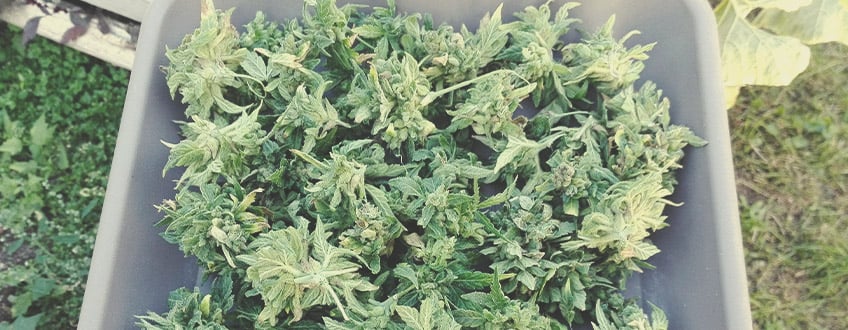

Solomatic CBD
|
|
Diesel CBD x Asia CBD Auto |
|
|
5 to 7 oz/m² |
|
|
2 to 3 feet |
|
|
7 - 8 weeks |
|
|
THC: 1% |
|
|
Sativa 20% Indica 70% Ruderalis 10% |
|
|
1 to 3 oz/plant |
|
|
2 to 3 feet |
|
|
10 – 11 weeks after sprouting |
|
|
Clear, Light |





























